

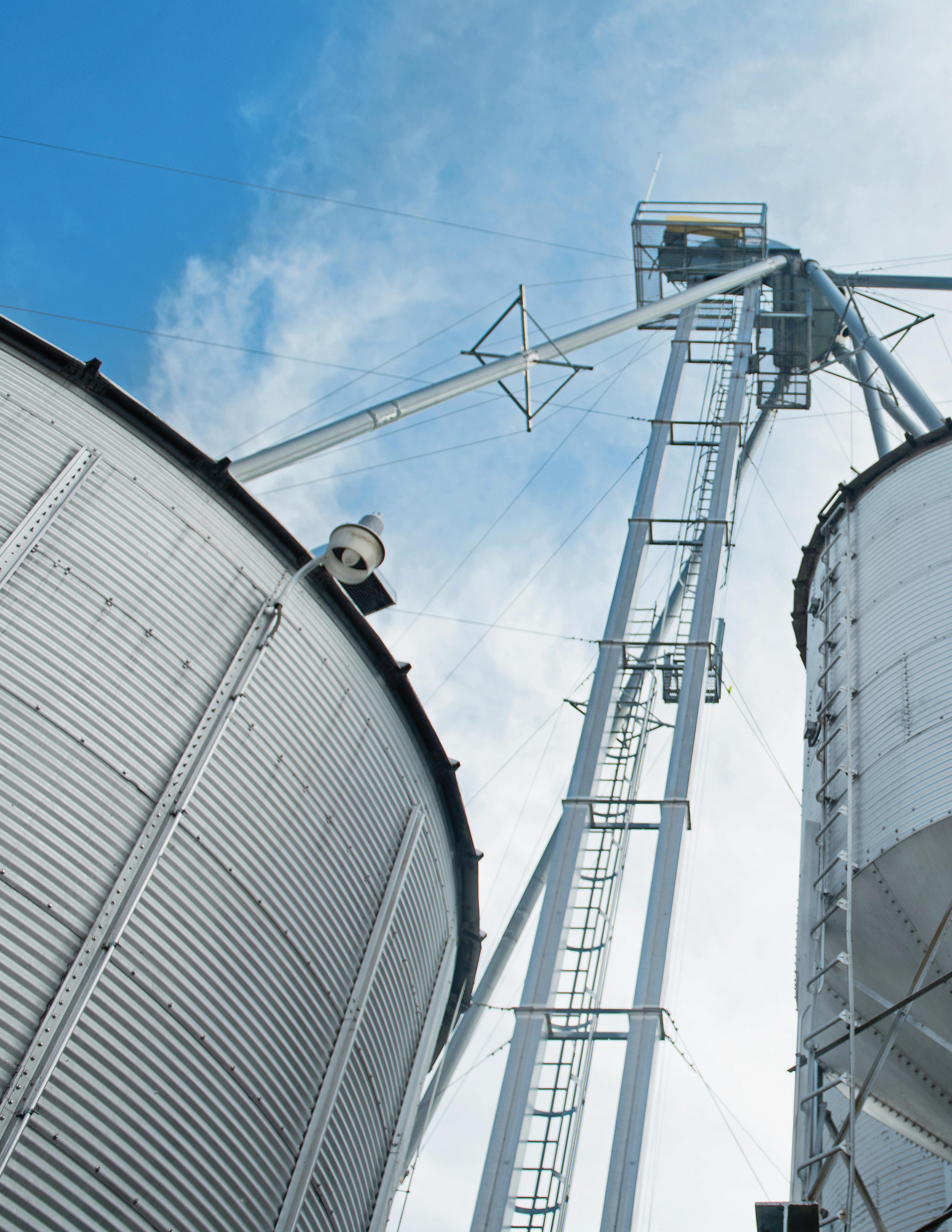













Whether shipping by river, road or rail, the soy checkoff is committed to ensuring America’s infrastructure is a significant advantage for U.S. soybean farmers. We’re looking inside the bean, beyond the bushel and around the world to keep preference for U.S. soy strong. And it’s helping make a valuable impact for soybean farmers like you.
See more ways the soy checkoff is maximizing profit opportunities for soybean farmers at unitedsoybean.org


COVER STORY:


We have all heard it a million times: 2020 was an unprecedented year. But that did not stop the Ohio Soybean Association from continuing its work advocating on behalf of Ohio soybean farmers. On pages 8 and 9, you can see how we continued to keep soybean farmers top of mind for legislators, including playing a major role in advocating for H2Ohio funding and the Statewide Watershed Planning and Management Program. OSA will continue to build on our 2020 successes and work in the best interest of all soybean farmers in 2021.



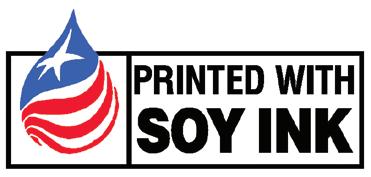
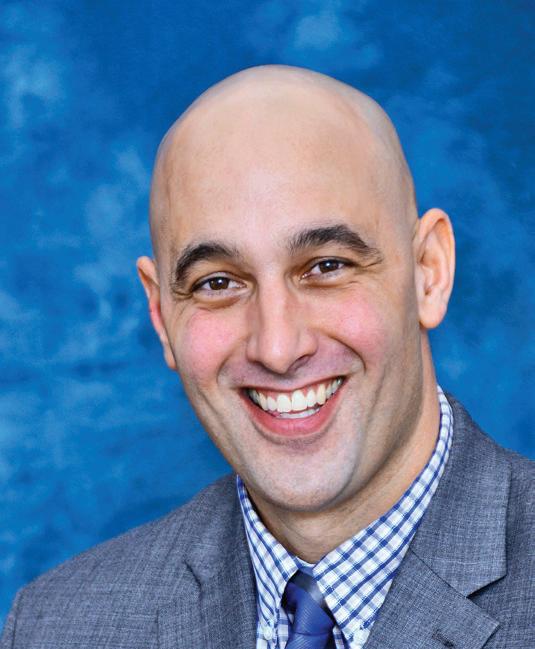
Ohio Soybean Association President Marion County soybean farmer
early December, I was re-elected to serve as the Ohio Soybean Association president for a second year. I want to thank my fellow board members for trusting me and giving me the opportunity to lead our organization for another year. 2020 was certainly a unique time to serve as president, but I am incredibly proud of all we accomplished as an organization this year. You can read more about our accomplishments on pages 8-9.
During the OSA December board meeting, the board elected the other members of the executive committee. Patrick Knouff of Shelby County was reelected to the role of vice president, Jennifer Wilson-Oechsle of Van Wert County was elected to serve as secretary and Rusty Goebel of Williams County was elected to the role of treasurer. I am excited to continue working alongside such a great group of soybean advocates in 2021.
Next year will bring a new administration and new opportunities to advocate on behalf of Ohio soybean farmers. In 2021, OSA will focus on
policies that drive more export markets for Ohio soybean farmers
advocating for Ohio farmers in the H2Ohio process, and monitor the development of the Total Maximum Daily Load (TMDL) for Western Lake Erie
policies that increase rural broadband access
policies that allow access to dicamba-tolerant soybean varieties
policies around carbon markets and GHG sequestration
In the ongoing effort to be even more transparent with our members, we have started a short news bulletin called the Soybean Scoop. It will be published every Friday on our website and give our members the latest updates about what we have been working on in the previous week. I encourage you to see it for yourself at www.soyohio.org
While you are on our website, I also encourage you to renew your OSA membership or join if you have not already. Your membership is vital to the success of our organization and allows us to advocate for policies that will protect and benefit soybean farmers for generations to come. Already a member? Consider reaching out to your OSA district representative. Get a feel for what OSA is currently working on and how you can get involved, whether that includes sending an email to your representatives or donating to our PAC. Visit www.soyohio.org/membership to learn more.
Thank you for reading the Ohio Soybean News and Happy New Year!
 Ryan Rhoades OSA President Marion County
Ryan Rhoades OSA President Marion County
President
Ryan Rhoades, Marion County
Vice President
Patrick Knou , Shelby County
Treasurer
Rusty Goebel, Williams County
Secretary
Jennifer Wilson-Oechsle, Van Wert County
Chairman
Scott Metzger, Ross County
Trustees
Jerry Bambauer, Auglaize County
Trish Cunningham, Union County
Bret Davis, Delaware County
Justin Esselburn, Holmes County
Caitlyn Heimerl, Industry A liate Ex-O cio
Je Magyar, Ashtabula County
Je McKanna, Hancock County
Derek Reusser, Holmes County
Andy Stickel, Wood County
Bob Suver, Clark County
Kerrick Wilson, Preble County
American Soybean Association
Board Representatives
Jerry Bambauer
Bret Davis
Scott Metzger
Sta Credits
Kirk Merritt - Publisher
Julia Brown - Editor
Brent Warren - Art Director
Barry Falkner - Photo Quality/Proofer
Ohio Soybean news is published six times a year by the Ohio Soybean Association, 918 Proprietors Rd., Suite A, Worthington, OH 43085. Phone: 614-476-3100. For address corrections contact Ohio Soybean News at 918 Proprietors Rd., Suite A, Worthington, OH 43085.
Web address: www.soyohio.org E-mail: cdeboard@soyohio.org
Comments and statewide news articles should be sent to the above address. Advertising space reservation must be made by the rst of the month preceding publication. In consideration of the acceptance of advertisement, the agency and the advertiser must, in respect of the contents of the advertisement, indemnify and save the publisher harmless against any expense arising from claims or actions against the publisher because of the publication of the content of the advertisement.
For Advertising Sales Contact:
Matt Herman - (612) 812-5833
matt.herman@dtn.com


Election Day 2020 has passed, and the federal governance path ahead appears clearer. At the time of publication, we still do not know who will control the Senate as the two Georgia runoffs have not yet happened, the election results point to President-elect Joe Biden taking office Jan. 20, 2021. The House will remain in Democratic control.
What can be expected in the coming months?
In Congress, important transitions are ahead for agriculture. We will look at the leadership of the House and Senate Agriculture Committees following the year-end retirements of Senate Agriculture Committee Chairman Pat Roberts (R-KS) and House Agriculture Committee Ranking Member Mike Conaway (R-TX), as well as the defeat of House Agriculture Committee Chairman Collin Peterson (D-MN).
It is widely expected that Senator John Boozman (R-AR) will move into the lead Republican role on the Senate Agriculture Committee. On Dec. 1, the House Democratic Steering Committee recommended Rep. David Scott (D-GA) to become Chairman of the House Agriculture Committee in a 32-19 vote. If approved by the full House Democratic Caucus, Scott will be the first African American chair of the Agriculture Committee, which he has served on since 2002. On Dec. 2, the House Republican Steering Committee selected Rep. Glenn “GT” Thompson (R-PA) to serve as ranking member, succeeding Rep. Mike Conaway (R-TX), who is retiring from Congress.
In the coming weeks and months, we will learn who will be selected from their respective caucuses to serve in these three crucial roles. Importantly,
the three new committee leaders will join Senate Agriculture Committee Ranking Member Debbie Stabenow (D-MI) in laying the groundwork for the farm bill reauthorization ahead in 2023.
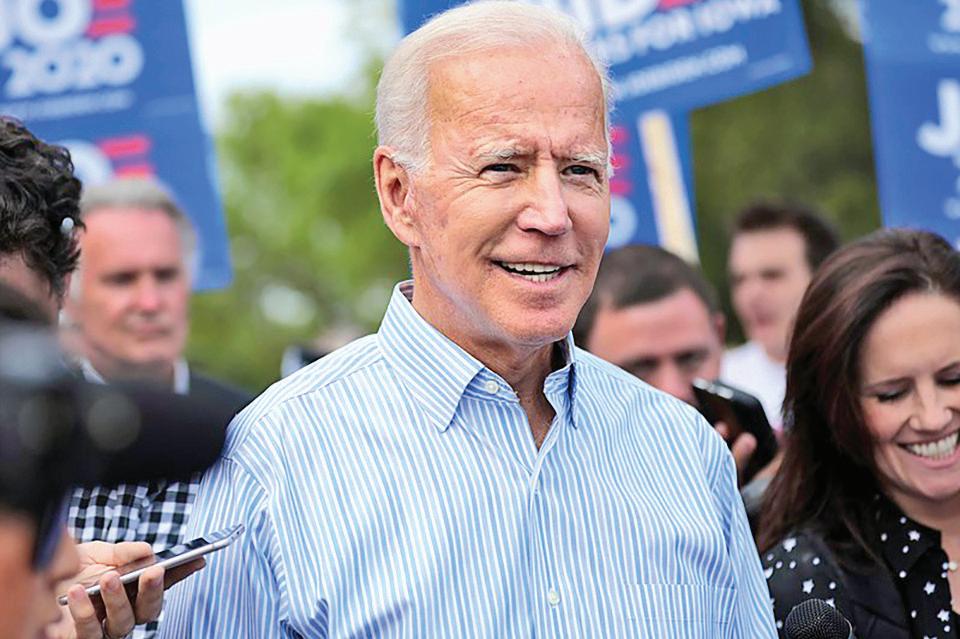
President-elect Joe Biden will take o ce on January 20, 2021. PHOTO BY GAGE SKIDMORE
Even though Inauguration Day is clearly defined, transitions of presidential administrations take time. In the coming weeks and months, we will hear the key personnel appointments of the Biden Administration. We will also learn the presidentelect’s potential nominees for Cabinet roles, such as the USDA Secretary, EPA Administrator, and USTR Ambassador, along with other political roles that may or may not require confirmation by the U.S. Senate.
Tom Vilsack has been named as United States Secretary of Agriculture. He served in the same role for eight years in the Obama Administration.
PHOTO BY BOB NICHOLS
number of votes to move forward to officially assume office.
After the presidential nominations are announced, the approval process begins. Senate committees will vet nominees and review relevant background documents supporting the nomination, and the nominees will participate in a series of meetings with committee members to earn their votes. Then, public hearings will be held prior to confirmation votes of the committees and full Senate on the president’s nominees.
Leadership and composition of the Senate — again, determined on Jan. 5, 2021 — can reasonably be expected to influence President-elect Biden’s selections of nominees. If a Republican-controlled Senate, the Biden Administration may be more moderate with nominee selections; if a Democratic-controlled Senate, the nominees may be more liberal. Very simply, it is a math equation: The nominees need to earn a sufficient
The Senate also impacts policies that the new Administration may pursue. Like the simple math equation noted regarding nominations, it is a matter of counting votes for legislation that may or may not move forward.
President-elect Biden will enter office during a pandemic and has expressed clear interest in getting coronavirus under control. His policy priorities also include addressing climate change, investing in infrastructure, bringing home supply chain manufacturing, revising education and workforce policies, and advancing racial equality in the nation. As with prior presidential administrations, we can expect a Biden review of Trump regulations to determine what he wishes to maintain or reverse.
In the transitions ahead, your ASA Government Affairs team in Washington, D.C., will continue to position soy favorably, work constructively and collaboratively, and build effective working relationships with policymakers. u





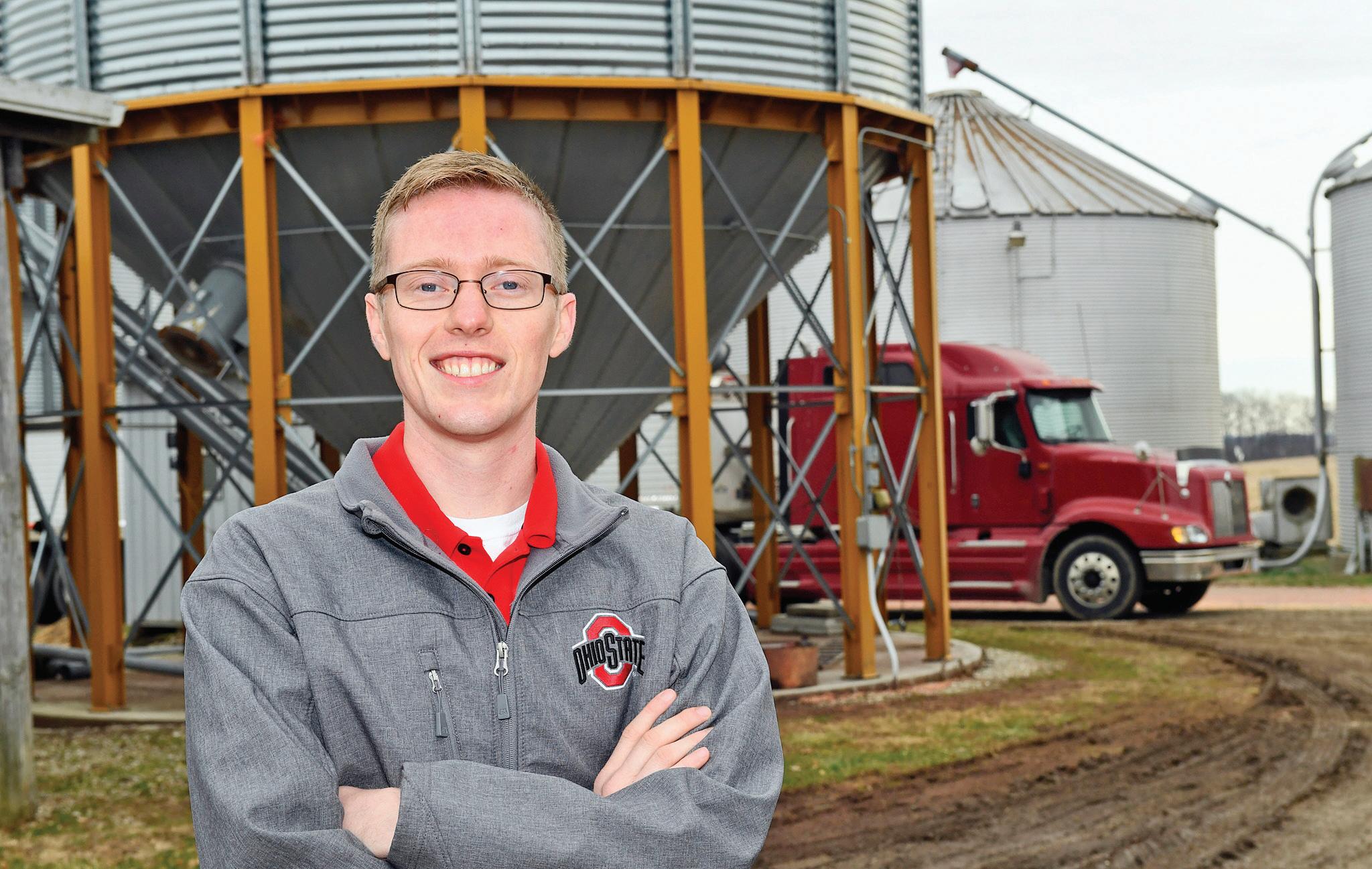
The Ohio Corn and Wheat Growers Association (OCWGA), and Ohio Soybean Association (OSA) held their respective business meetings and had election of new trustees and directors. These were followed by informative presentations covering the grain markets, weather outlook, and a political and legislative review.
During the business meetings, both organizations approved their minutes and financial statements from the respective 2019 annual meetings.
Newly elected trustees of the Ohio Soybean Association include: Jeff Magyar of Ashtabula County, Jennifer Wilson-Oechsle of Van Wert County, Jeff McKanna of Hancock County, Bob Suver of Clark County, and Scott Metzger of Ross County. The new OSA executive committee includes: President Ryan Rhoades of Marion County, Vice President Patrick Knouff of Shelby County, Secretary
Jennifer Wilson-Oechsle of Van Wert County, and Treasurer Rusty Goebel of Williams County.
Ben Brown, Assistant Professor at The Ohio State University, began the presentations with a recap of 2020 and an agricultural commodity outlook heading into 2021.
Dr. Aaron Wilson, Atmospheric Scientist and State Climatologist at The Ohio State University, gave a presentation looking back at the 2020 growing season across the country and other major growing regions around the globe.
He also shared some long-term agricultural weather perspectives for the state looking ahead to the winter months, and 2021.
An overview of the elections and potential impacts of the outcome was the topic of a presentation shared by Anne Thompson, Director, PAC and Political Strategy for the National Corn Growers Association, and Christy Seyfert, Executive Director of Governmental Affairs for the American Soybean Association.
The 2020 election has received major attention both in and outside
of agriculture. “There was something for everyone in this election,” said Thompson. “One of the remaining questions is if a divided Congress will mean bipartisanship of a two-year stalemate.”
Much discussion in the election cycle surrounded rural America. “There are varying schools of thought on what it means going forward, but there are opportunities to highlight agriculture priorities while the spotlight is on rural voters,” said Thompson.
While the congressional race in the Senate is still yet to be decided in Georgia, some of the leadership changes on committees will be important to agriculture.
“The slim margins in the House and Senate will be very tight, and hopefully drive bipartisan legislation,” said Seyfert. “One big change will be in leadership on the House Agriculture Committee changing from the current chairman Collin Peterson of Minnesota, to David Scott of Georgia. On the Republican side of the aisle, the Ranking Member position will change from Mike Conaway of Texas, to GT Thompson of Pennsylvania.”
There will also be changes on the Senate Agriculture Committee. “Chairmanship will transition from Senator Pat Roberts of Kansas, to either Republican Senator John Boozman of Arkansas, or if the Democrats take control of the Senate, then current Ranking Member, Senator Debbie Stabenow of Michigan will become the Chair, and Boozman will become Ranking Member,” said Seyfert.
Climate Change is expected to be a key issue moving into 2021 with the new administration, and potentially
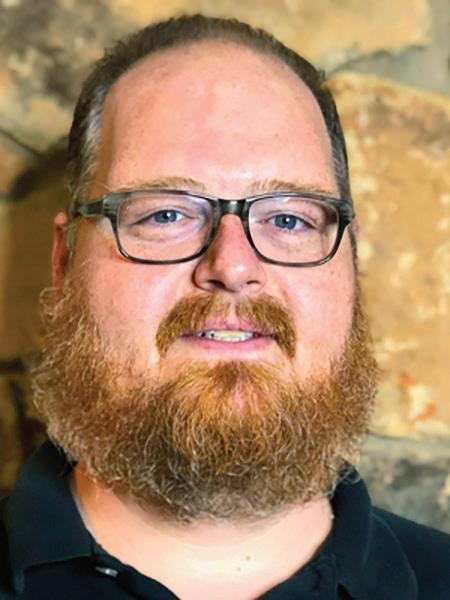

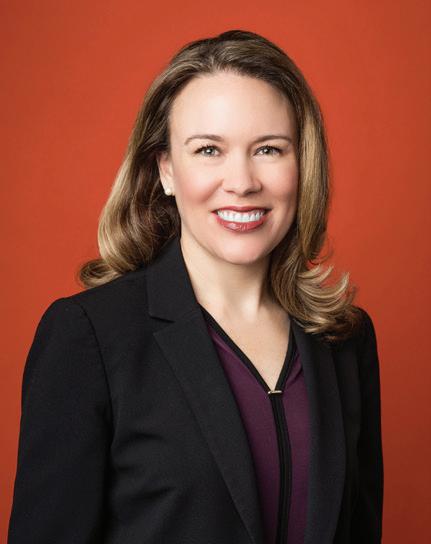
in the next farm bill.
“President Biden listed Climate Change as one of the four pillars for his new administration,” said Thompson.
“Other prominent Democrats such as Speaker Nancy Pelosi along with some key Republicans are also signaling that Climate Change is an issue that needs to be addressed.”
An important piece of legislation is the future of the Next Generation Fuels Act. “This Legislation is a first step in the process to transition the fuel supply into high octane fuel,” said Thompson. “Results would obviously include increased corn demand, along with reduced greenhouse gas emissions, improved air quality, and increase fuel efficiency.
There were over 14,000 bills presented to be considered by congress in the last year,” said Thompson. “This is just one of 14,000. This bill has a lot of stakeholder implications, including the automakers, oil refiners, and obviously agriculture. It will take a lot of work to gain the momentum needed to move it forward.”
The upcoming 2023 Farm Bill was discussed, along with potential challenges. “The new leadership on both the House and Senate Agriculture Committees will need to get up to speed quickly,” said Seyfert. “There will be a loss of institutional knowledge on both committees.”
A common phrase in Washington is that “Farm Policy is Evolutionary, not Revolutionary.”
There was over $45 Billion spent on Ad Hoc assistance to agriculture in programs such as the MFP and CFAP,” said Seyfert. “This may have an impact on the process and programs.”
When it comes to trade, and the outlook of the next administration, ASA and NCGA are watching closely. “The Biden team has indicated that there would be no immediate change to the Phase 1 Trade Agreement with China,” said Thompson.
In August of 2020, Candidate Joe Biden stated: “A Biden-Harris Administration will promote and advance renewable energy, ethanol, and other biofuels to help rural American and our nation’s farmers, and will honor the critical role the renewable fuel industry plays in supporting the rural economy and the leadership role American Agriculture will play in our fight against climate change.”
“NCGA, ASA, and other agriculture organizations will remind the new administration of this promise, and leverage it,” said Thompson. Agriculture will be watching a few key things in the coming
months. “The Administration’s utilization of the Commodity Credit Corporation will be one,” said Seyfert. “Could this be used for carbon sequestration payments is a question being asked. The role of climate change will be notable.”

“It is anticipated that the Administration will take its lead from the Obama-era on nutrition and anti-trust issues. Workers safety and labor issues will also be watched,” said Seyfert. “It is anticipated that once in office, Joe Biden will likely change some of President Trump’s Executive Orders, and reverse some of his regulatory changes.” u
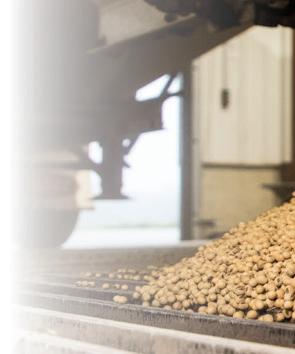


IOM Grain in Portland, Indiana, is currently contracting non-GMO food grade soybeans growers for the 2021 crop year. As the leading regional buyer for premium food grade, non-GMO soybeans, we work with the best growers to ensure they harvest the highest quality, highest yields, and receive the highest premiums—all over CBOT (no basis).
If you’re all about growing quality, non-GMO soybeans and earning the highest premiums, contact Erik Loucks today and discover how, together, we can grow quality from the ground up.
Contact Erik today at 260-726-6224. iomgrain.com


most places, OSA had to make some adjustments, but we never stopped working and advocating for our members.
At the beginning of the year, President Trump signed into law the U.S.-Mexico-Canada (USMCA) trade agreement, which, once implemented, provided much-needed certainty for U.S. agriculture. Delaware County soybean farmer Bret Davis attended the signing to represent the American Soybean Association (ASA) and Ohio soybean farmers. We continue to advocate for trade policies that keeps our key export markets open and expands to new markets.
Nine volunteer farmer leaders represented Ohio soybean farmers to help shape 2020’s national policy agenda at Commodity Classic in
San Antonio, Texas. Delegates were:
Jerry Bambauer (Auglaize County), David Clark (Warren County), Bret Davis (Delaware County), Rusty Goebel (Williams County), Ryan Rhoades (Marion County), Kerrick Wilson (Preble County), Jeff McKanna (Hancock County), Steve Reinhard (Crawford County), Bob Suver (Clark County).
OSA and ASA advocated for agriculture’s inclusion in the federal coronavirus relief packages. The Coronavirus Food Assistance Program (CFAP), USDA’s $16 billion COVID-19 relief package for agriculture included funds for losses due to ongoing market disruptions.
During a time when state agencies were slashing their budget because of the impacts of COVID-19, $50 million in funding for H2Ohio remained because of the enthusiasm farmers showed for the program. The farmer certification program through Ohio Agriculture Conversation Initiative also launched this year.
OSA hosted a Virtual Farm Tour for Congressional and Statehouse staff and legislators on OSA Chairman Scott Metzger's farm in Ross County. Attendees represented urban and rural districts, as well as Democratic and Republican offices.




At the height of growing season, the Ninth Circuit’s decided to overturn the U.S. Environmental Protection Agency’s (EPA) approval of 3 dicamba products used on soybeans. EPA’s Cancellation Order and Existing Stocks guidance — issued by EPA in response to the Court’s vacatur of those 3 dicamba registrations — was critical for soybean and other growers who have invested billions in seed and herbicides and who had an immediate and narrow window for planting and weed control application. The guidance allowed growers and commercial applicators to use existing stocks that were purchased on or before June 3, 2020, the effective date of the Court decision. That use must be consistent with the product’s previously-approved label and could not continue after July 31, 2020. In
November, EPA Administrator Andrew Wheeler and his staff announced and published a new dicamba registration. These actions re-register dicamba for over-the-top use on dicamba-tolerant soybeans for five years.
OSA testified on a number of bills in the state legislature from water quality programs and funding to a beginning farmer tax credit and legislation addressing eminent domain. There may have been turmoil at the Statehouse, but OSA was actively engaged in representing soybean farmers’ interests.
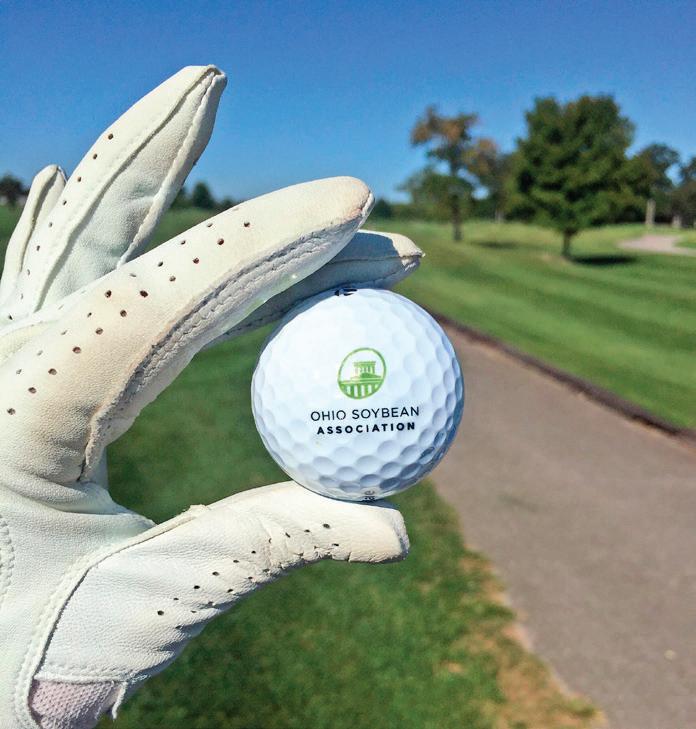
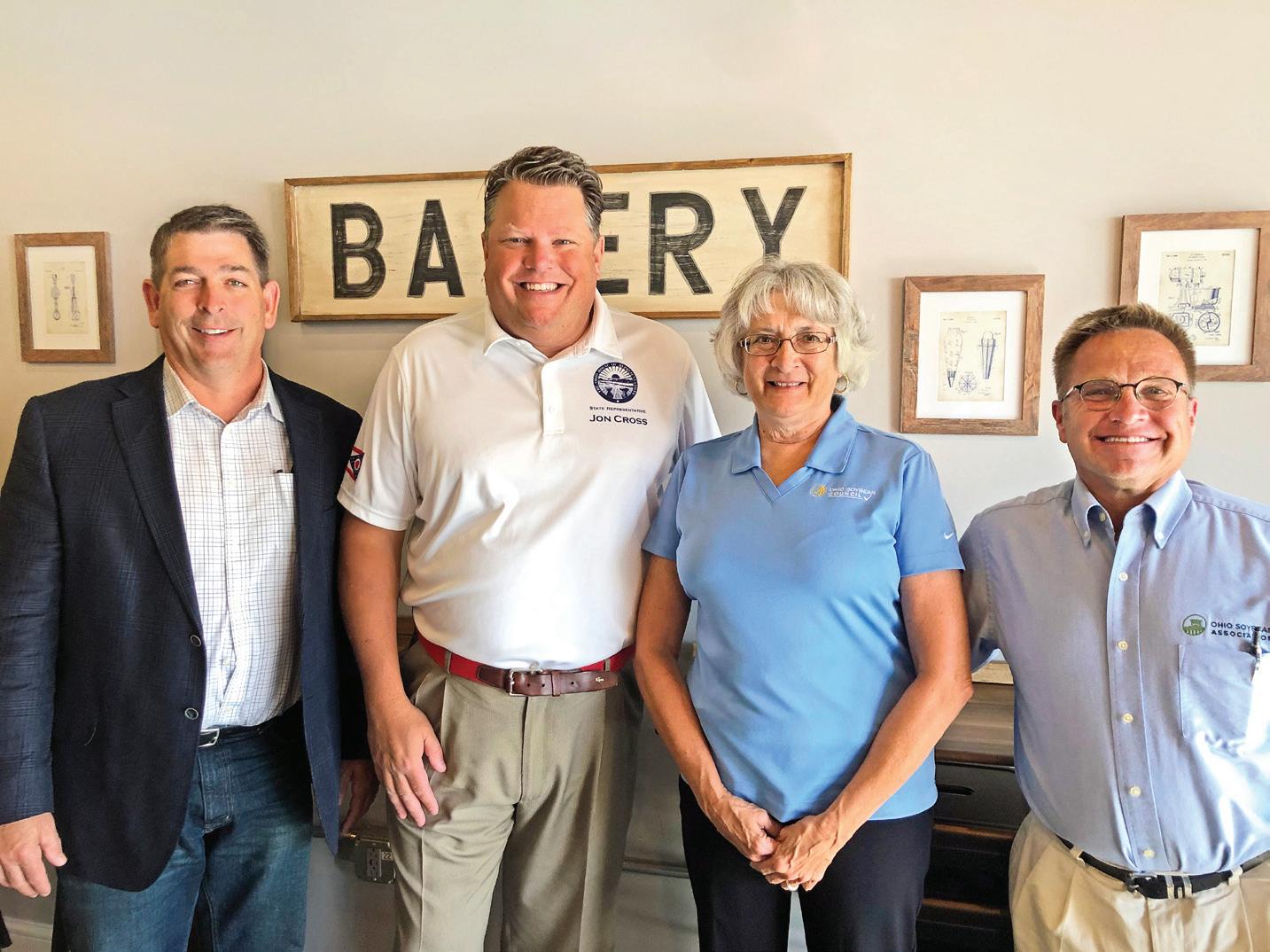
We participated in an on-farm Ag Roundtable with Congressman Troy Balderson. In addition, we also hosted a meeting of a small group of farmers with State Representative Jon Cross in Findlay.
We held our annual golf outing fundraiser in Delaware, OH. This
event helps support our lobbying and membership efforts. A portion also goes to our PAC. Thank you to all our friends and sponsors for supporting this event!
Trade

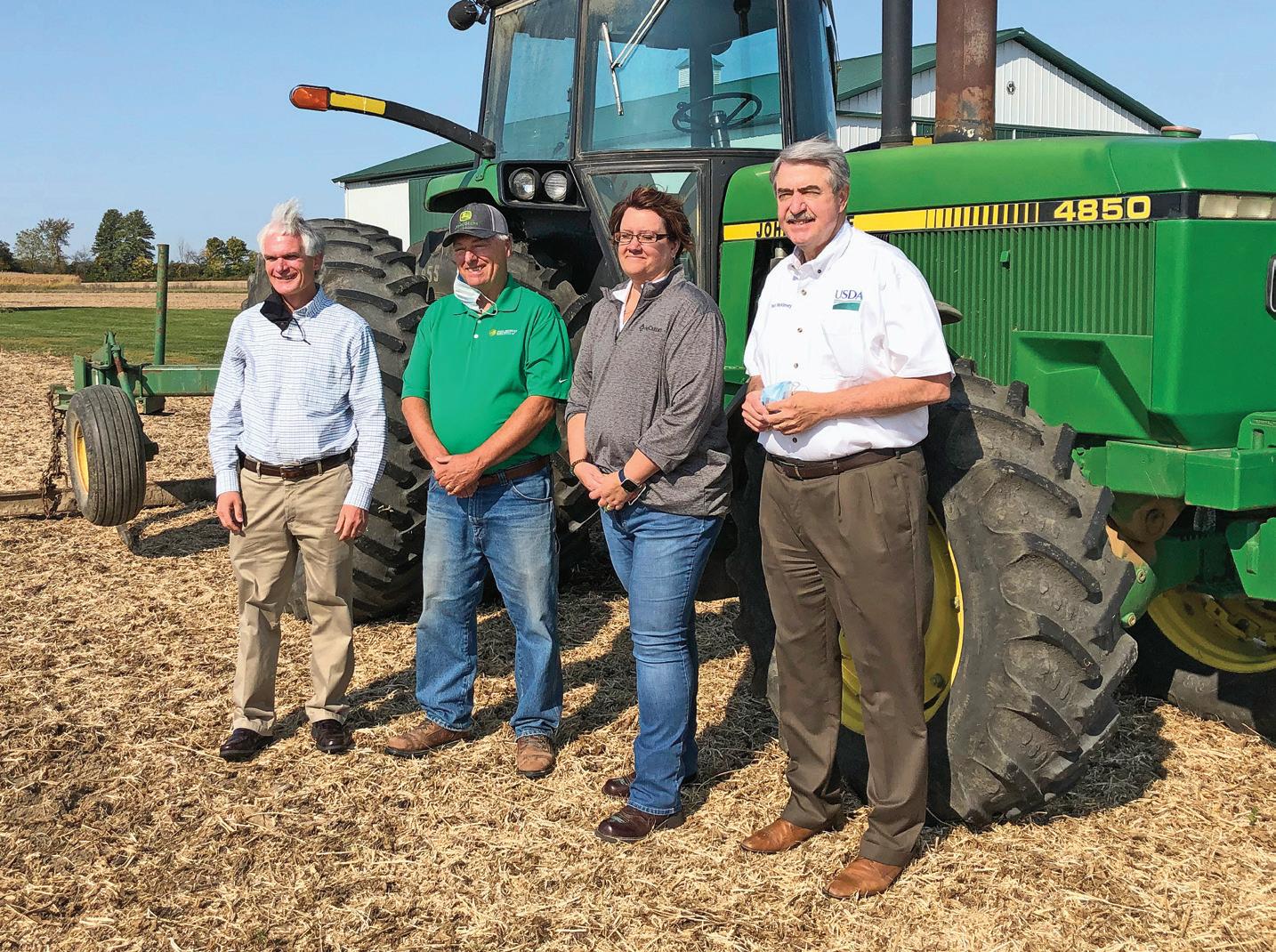

October – Rep. Latta Farm Visit Farmer leaders met with Congressman Bob Latta and USDA Under Secretary of Trade & Foreign Agricultural Affairs, Ted McKinney at former board member Mike Heffelfinger’s farm in Van Wert county to discuss Phase One trade progress, recent and upcoming trade deals and expanding trade in Europe.
We finalized all of our great member benefits and sent all renewal info by mail and email. Toward the end of the month, we took a break to support our friends at the Ohio Poultry Association and ate some turkey.
For the first time ever, the Ohio Grain Farmers Symposium was held virtually. The event featured Ben Brown and Aaron Wilson from The Ohio State University and Christy Seyfert from ASA. u


A new year brings with it new board members.

Bob Suver
Bob Suver farms soybeans and corn near Springfield, Ohio. Bob serves on the Board of Trustees for both the Ohio Soybean Association and the Ohio Soybean Council. He is also an active member of the Clark County Farm Bureau and a member of the Ohio Corn & Wheat Growers Association. Bob sits on the governing committee for the World Initiative for Soy in Human Health (WISHH), an organization that works to strengthen demand for U.S. soy in developing and emerging markets.
Outside of agricultural organizations, Bob acts as president of both the Glen Haven Memorial Park and the Marriage Resource Center of the Miami Valley. He holds a bachelor’s degree in business administration from Ohio University. Bob is a member of the Bethel Baptist Church.










In addition to brand new board members, there were also several OSA board members who were re-elected to their positions. These re-elected board members include: Jeff Magyar of Ashtabula County, Jennifer WilsonOechsle of Van Wert County, Jeff McKanna of Hancock County and Scott Metzger of Ross County.
The OSA board also elected its 2021 officers in December. President Ryan Rhoades of Marion County and Vice President Patrick Knouff of Shelby County were re-elected to their roles. Rusty Goebel of Williams County will serve as treasurer and Jennifer Wilson-Oechsle will serve as secretary in the coming year.
Justin Esselburn (Not Pictured) At-Large Young Leader, Holmes County
Justin Esselburn raises corn, wheat and soybeans near Loudonville, Ohio. He helps run a cow-calf operation of


60 cows and feeds out the calves for breeding stock and freezer beef. All the livestock are grass-fed and grainfinished and his family keeps a strong emphasis on herd health.
Justin is also a Certified Crop Advisor for Loudonville Farmers Equity and helps put agronomic plans together for area farmers. Along with management of the crops with Loudonville Equity, he’s able to assist in the custom operations on farms from planting to fertilizing and crop protection.
He is a member of St. Peters Catholic Church in Loudonville and serves on the parish council. Additionally, Justin is a member of the Knights of Columbus. He also supports local 4-H and FFA chapters at different county fairs. He has a bachelor’s degree from Texas A&M University in animal science with a minor in agricultural economics. u




From researching new uses for soybeans to identifying new markets for U.S. soy, the soy checkoff is working behind the scenes to create new opportunities and increase profits for soybean farmers. We’re looking inside the bean, beyond the bushel and around the world to keep preference for U.S. soy strong. And it’s helping make a valuable impact for soybean farmers like you.
See more ways the soy checkoff is maximizing profit opportunities for soybean farmers at unitedsoybean.org




$200 Soybean Seed Coupon
Biodiesel Bucks
NDVI Satellite Imaging
OSA Member Pin
Soybean Keychain
Soybean Sticker
Eligible to Win $1,000 Parts & Service Credit from Ohio Ag Equipment
25% off Retail of a Roof Maxx Product
Subscription to Ohio Country Journal/Ohio Ag Net & The Progressive Farmer
Subscription to Ohio Soybean News
American Soybean Association Benefits
Professional Development Connections & Opportunities
Representation at the Statehouse & on Capitol Hill













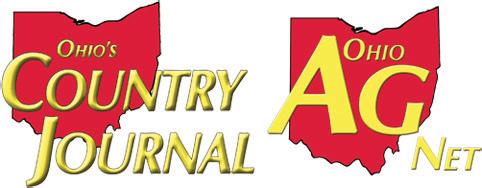










Retired







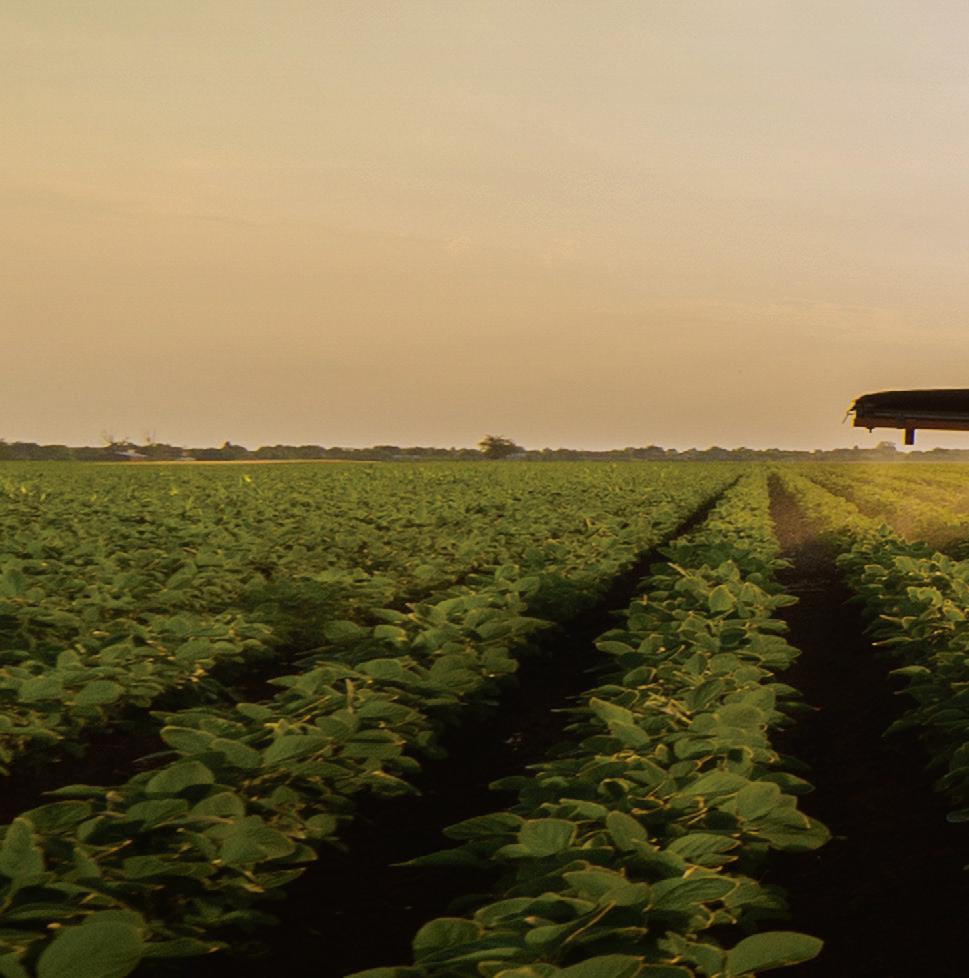
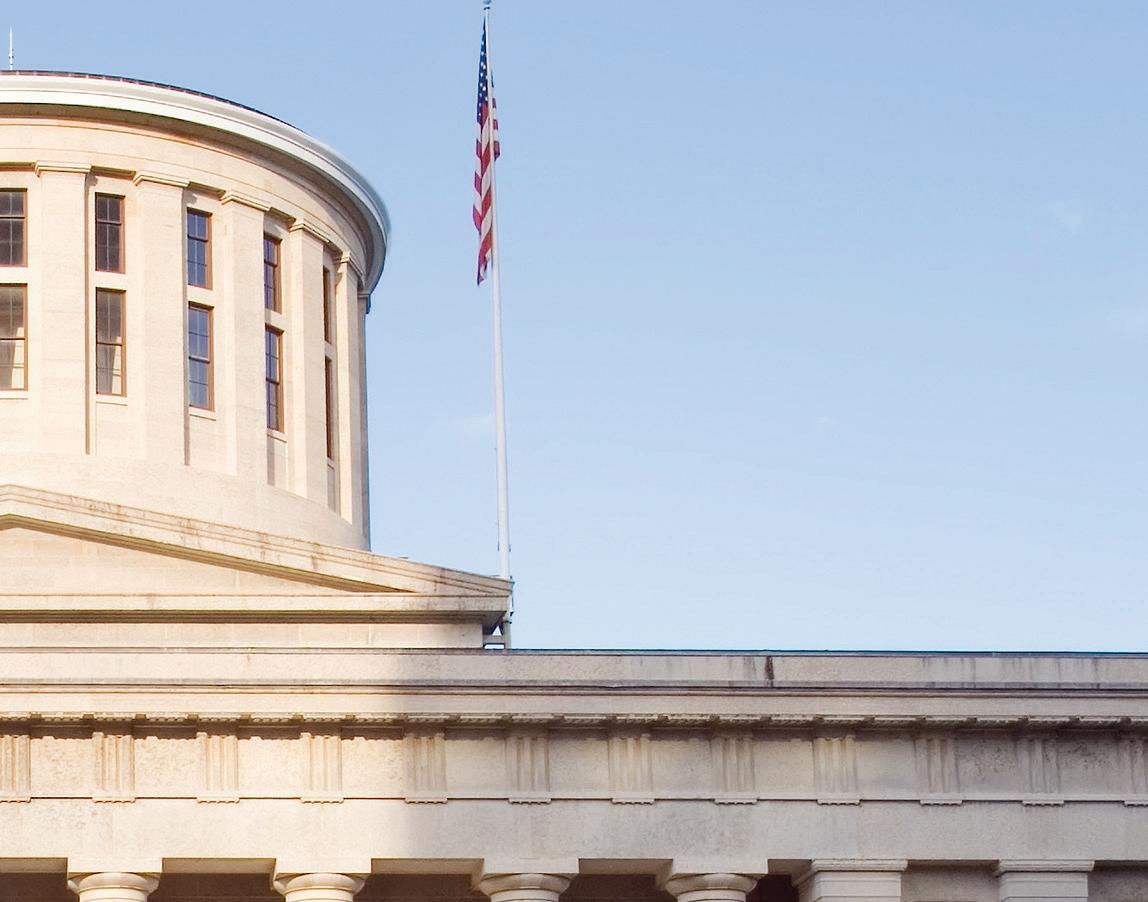



















 By Brandelyn Twellman
By Brandelyn Twellman
What started as one report of African Swine Fever (ASF) in August 2018 debilitated countless swine producers across China in just 9 months. The country has experienced the ebbs and flows of the virus since that time while working to prevent the spread and recover.
Xiaoping Zhang, U.S. Soybean Export Council (USSEC) Regional Director for Greater China, presented on ASF at the 2020 Global Grain Geneva, hosted virtually Nov. 17-19. He provided both a background of the virus in China and an updated future outlook throughout the session. The Ohio Soybean Council and soybean checkoff support USSEC on many of their efforts to build demand for U.S. soy in international markets.
China was the largest pork producing and pork consuming country in 2017,
Chinese poultry production has increased in recent years, catching up to pork production in the country.
Xiaoping Zhang said. The introduction of ASF in 2018 caused turmoil in the industry, impacting hog farmers and the market as a whole. Chinese swine production decreased by more than 130 million hogs from 2017 to 2019. This reduction was the result of rapid spread and a delay in implementing measures to confine the disease. Small and medium farmers had to rush to sell their livestock to avoid economic crisis before government programs were implemented.
After investigation, the Chinese government determined farmers and vehicles were predominately spreading ASF, Xiaoping Zhang explained. From there, they implemented guidelines to stop the spread, including culling hogs, blockades on farms and even farming bans.
Chinese hog farmers also lost market share within the country’s feed production throughout the ASF outbreak. The gain poultry production has made in the past nine years, has made it comparable to pork production in China.
Though farmers and markets took a hit because of ASF, Xiaoping Zhang
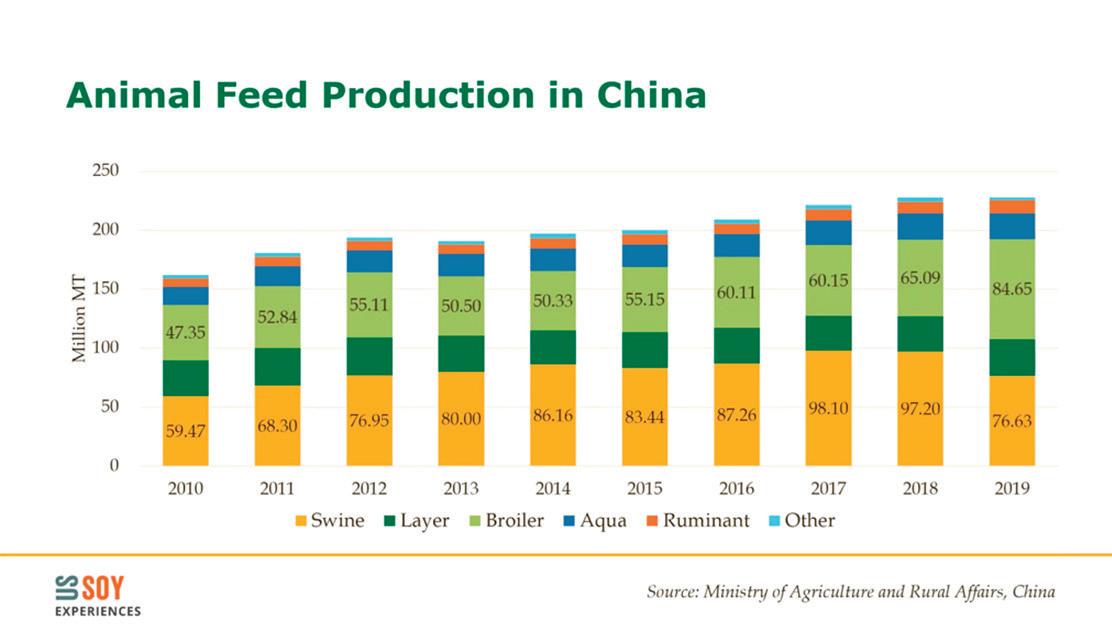
explained that not all hope is lost in the country. Because of biosecurity measures and government programs now put in place, China has actually been seeing an increase in hog numbers, lending to a strong rebuild of inventory.
“The goal set by the government is that by the end of 2020, hog numbers will be recovered to 80 percent of the pre-African Swine Fever level,” Xiaoping Zhang said.
He added that there is a place for U.S. Soy in this recovery.
Chinese swine production only satisfies the demand of food needs in China, leaving the animal industry to rely on imports. There is a market for whole soybean imports to be processed into meal in the country. U.S. Soy is a contender to meet this demand.
“The U.S. Soy industry has been servicing this market for almost 40 years by partnering with animal industry, feed industry, crush industry and food industry with U.S. Soy solutions to increase the efficiency and profitability,” Xiaoping Zhang said. “We believe U.S. Soy advantages will continue to help China attain its goal of sustainable food security and food safety.” u
A er discovering the methods by which ASF was spreading, the Chinese government implemented measures to combat its spread.



Dave Dotterer of Wayne County has been reappointed by U.S. Department of Agriculture Secretary Sonny Perdue to serve on the United Soybean Board (USB).
USB manages the national soybean checkoff which was created by the Soybean Promotion, Research, and Information Act. The board is composed of 78 members representing 29 states and Eastern and Western regions.
“We are glad to see a strong leader like Dave reappointed to the United Soybean Board,” said Bill Bateson, Ohio Soybean Council (OSC) Chairman
and Hancock County soybean farmer.
“With his leadership, Ohio farmers can be confident that their best interests are being represented at the national level.”
Dotterer has served on the OSC Board of Trustees since 2014 and currently serves as Secretary. He has served on the USB Board of Trustees since 2018.
Dotterer farms more than 1,100 acres of soybeans, corn, wheat and hay. He is also active in the Wayne County Farm Bureau and serves on the board of the Ohio No-Till Council. He previously served on the Ohio Soybean Association Board of Trustees. u
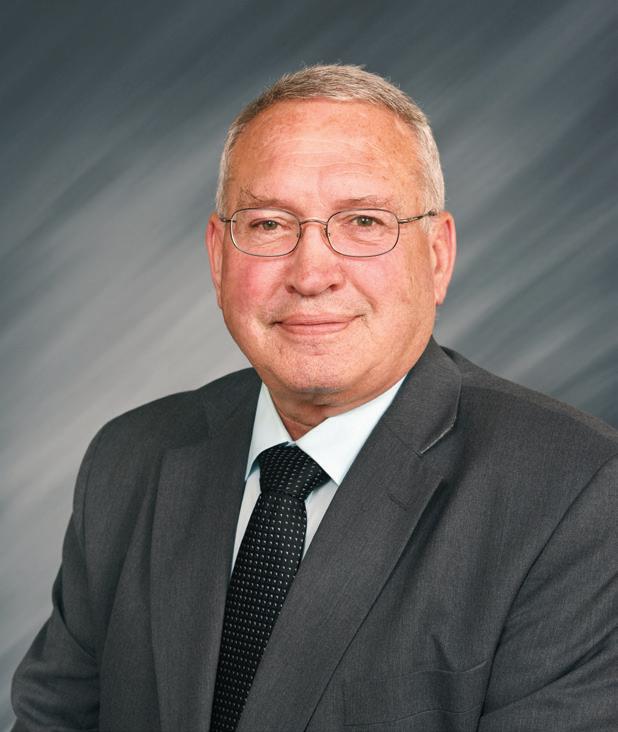

The Ohio Soybean Council Board of Trustees re-elected its officers to serve a second term at their annual meeting in November. Chair Bill Bateson of Hancock County, Vice Chair Jeff Magyar of Ashtabula County, Treasurer Bill Bayliss of Logan County and Secretary Dave Dotterer of Wayne County will all continue their respective roles in 2021.
In addition to its re-elected executive committee, a new farmer leader will also be joining the board in the new year. Tyler Miller of Crawford County will replace Mike Mutchler, also of Crawford County, who retired last year after serving since 2018.
Miller farms over 2,000 acres near Bucyrus, Ohio. In addition to serving on the OSC board, he is an active member of the Ohio Corn & Wheat Growers Association and Ohio Farm Bureau. Miller also serves as a 4-H advisor for Crawford County and works on staff for Crawford County’s 4-H camp. u
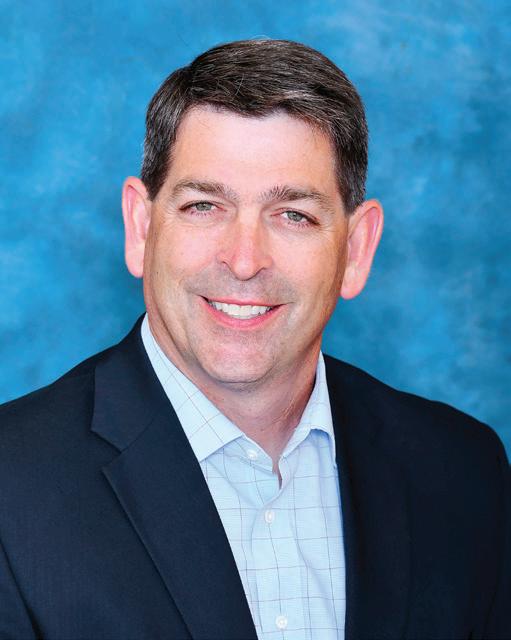

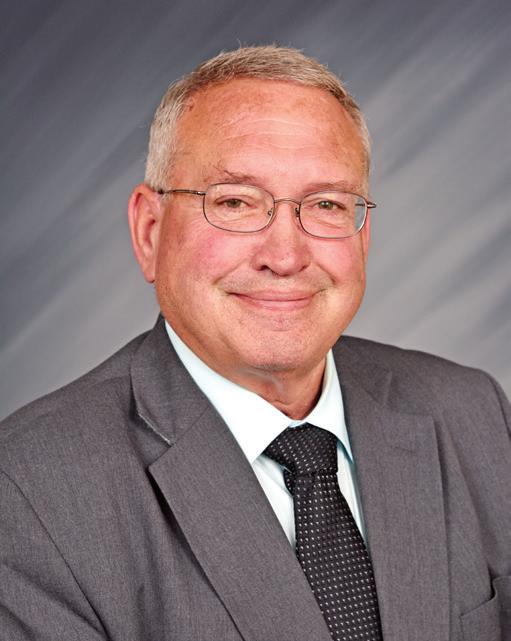

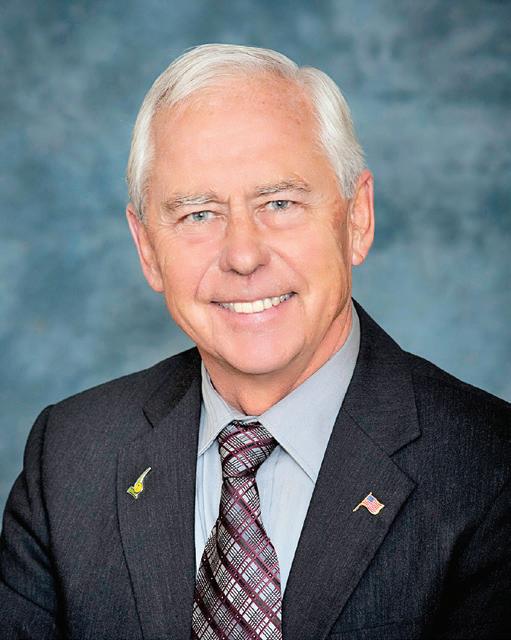

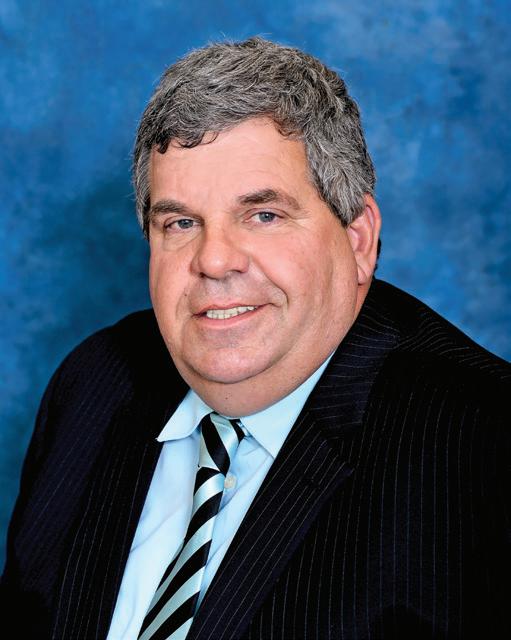








In October, the Ohio Soybean Council (OSC) and soybean checkoff had a unique opportunity to partner with the Ohio Department of Education through GrowNextGen, OSC’s online agriculture education resource. The month-long Feed and Fuel Your Future Career virtual learning series sought to connect science and agriculture careers through live virtual field trips, lessons and career panels. The event also partnered with Feed the World, the corn education resource from Ohio Corn & Wheat.
In Week One, students took a virtual field trip to Cargill, Inc. in Sidney, Ohio, where they learned about careers in the food processing industry and saw the production of soybean oil and animal feed from raw soybeans. This week’s virtual lesson focused on how to read a food label and why labels are important for increasing your knowledge of nutritious foods. The first week was capped off by a career panel that included panelists from Nestle USA, Sandridge Foods, The Ohio State University and the Center for Food Technology.
GrowNextGen also recently announced their Teacher Leaders of the Year: Andrea Harpen, Trevor Horn and Rachel Sanders.



Week Two featured a virtual field trip to soybean farmer and OSC board member Nathan Eckel’s Wood County farm, with a virtual lesson about identifying issues in nature that affect yield and food production on farms. Week Two also ended in a career panel with panelists from Luckey Farms Coop, Sunrise Cooperative and the University of Kentucky.
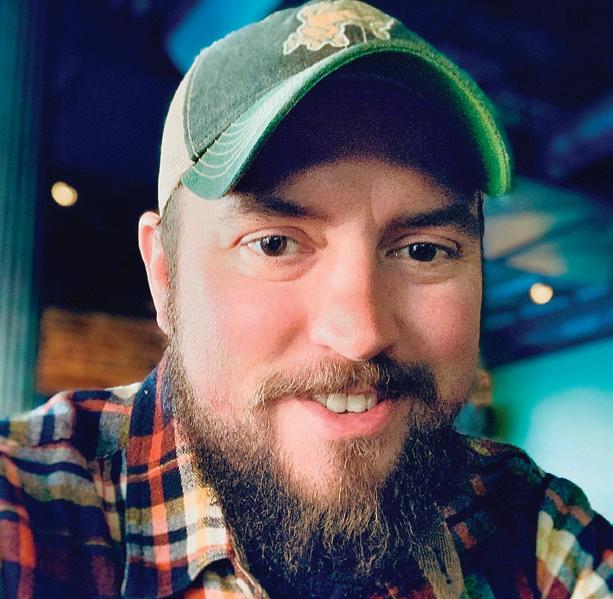


Andrea Harpen is a chemistry and physics teacher at Blanchester High School in Blanchester, Ohio. When asked about focusing on real-world problems in her classroom, she said, “I love finding new ways to connect my core science content with what is happening in Ohio and the world. I came to teaching after working in the industry, so it’s always been important to me that my students understand topics that are being tackled by government and industry worldwide. By incorporating these themes in my curriculum, I feel like I’m better preparing them for the workforce.”
Trevor Horn is an agriculture, food science and nutrition teacher at Reynoldsburg High School in Reynoldsburg, Ohio. He enjoys teaching his students to become positive influences in their community. “Food connects the dots to all the core values
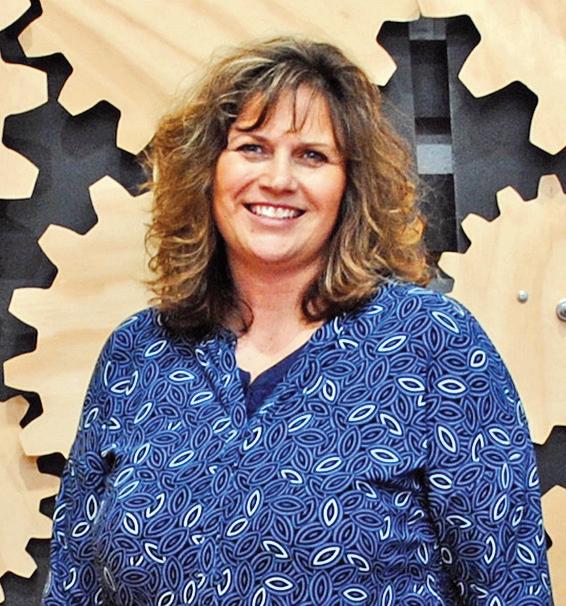


of education. Everyone has one thing in common—we all eat,” Horn said. “This idea has allowed me to open students’ eyes to the possibilities of careers in the food industry. We discuss challenges and opportunities for growth. This drives them to think of ways to make improvements on a global level.”
Rachel Sanders is a science instructor and FFA advisor at Global Impact STEM Academy in Springfield, Ohio. “The “aha” moment for using agriculture as a vehicle to teach science was as unique as the program we are creating at Global Impact. I used bio-based products as the way to introduce my students to the agriculture industry,” Sanders explained. “With the help of my female students, we turned bioproduct activities into ‘Women in Stem’ nights; these serve as a recruiting tool and give us an avenue for introducing more females to careers in STEM.” u


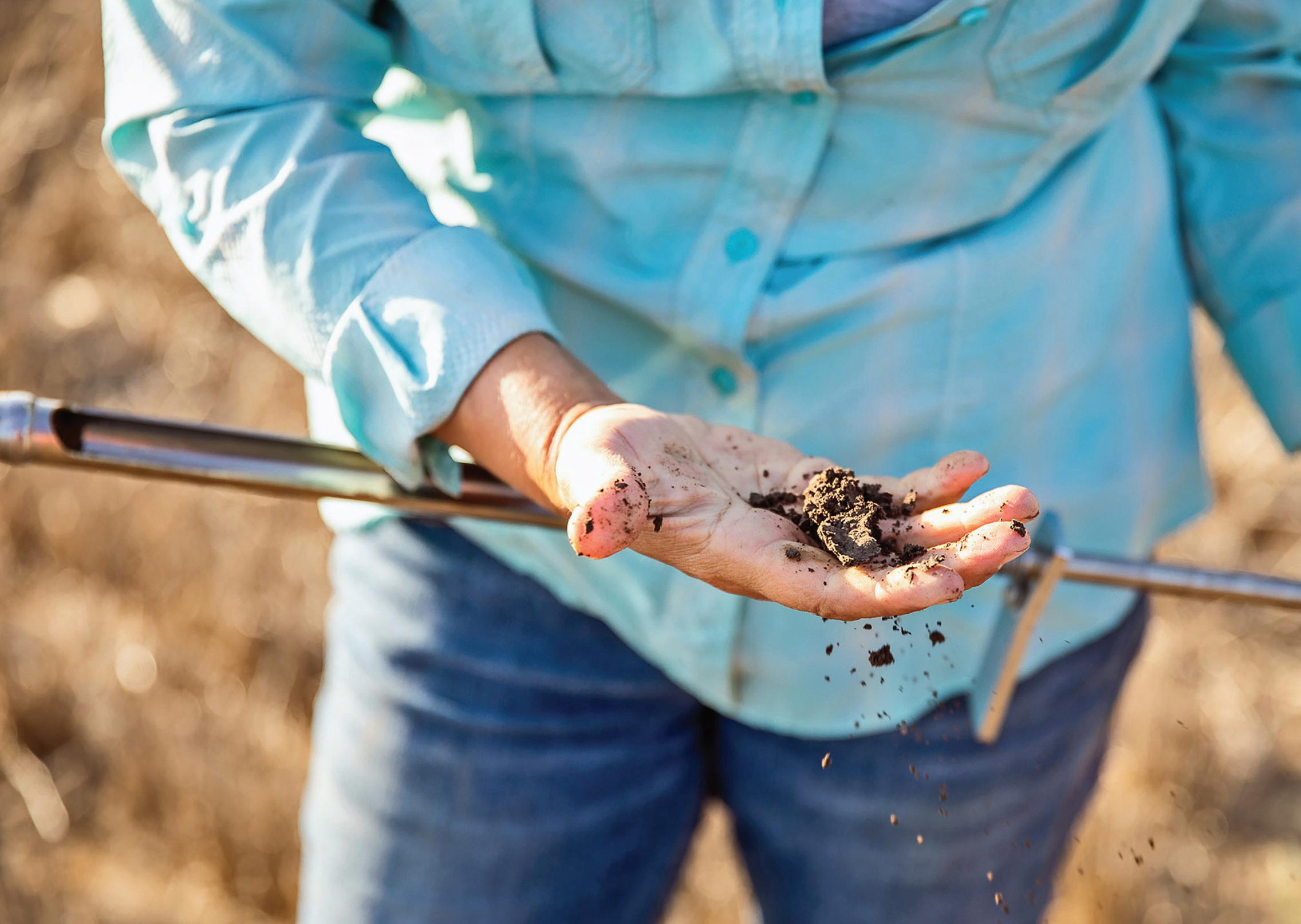
As soybean growers make their seed variety selections for 2021, The SCN Coalition encourages them to talk to a trusted expert — a seed representative, crop consultant or university/extension specialist — to determine if they are using an effective source of SCN resistance and rotating sources of SCN resistance.
Iowa State University Nematologist Greg Tylka says most SCN-resistant varieties have the PI 88788 source of resistance, and in many soybean fields, the nematode is dragging down the yields of these varieties.
“Not every SCN resistant variety with PI 88788 is equally good in terms of nematode control. Still, in many experiments, we see the Peking source of resistance out-yielding
the best PI 88788 varieties,” he said. “And for 2021, soybean growers will have a third source of resistance sold by Syngenta under the Golden Harvest and NK Seeds brands. That source of resistance is PI 89772.”
In a new video series titled “Let’s Talk Todes,” Tylka and University of Missouri Plant Pathologist Kaitlyn Bissonnette explain why the SCN-resistant soybean variety a soybean grower selects can greatly impact their bottom line.
Bissonnette says most growers she talks to don’t know what source of resistance they are using. “Growers need to ask what source of SCN resistance they are using and make sure they rotate to another source of resistance to keep the nematode guessing,” she says. “Studies
show after using PI 88788 for decades, it isn’t as effective as it once was in many fields. That’s why growers need to more actively manage SCN and take the first step and test their soil for SCN, if they haven’t already done so, to know which fields are problematic.”
Tylka says if a soybean grower planted PI 88788 in their last rotation, they should consider planting a Peking variety or the PI 89772 source of resistance. “Growing the same source of SCN resistance for each soybean rotation increases the likelihood the nematodes will become resistant — dragging soybean yields lower,” he said. “Throwing different tools at SCN makes the overall management program more robust.” u







You are not farming the same soils your grandparents farmed,” said Hans Kok, Program Director for the Conservation Technology Information Center in Indiana.
Kok spoke during a presentation at the Ohio No-till Council’s Winter Conference and described the origins of the soils we find in this part of the Midwest, going back to the glaciers and continuing to the modern soil challenges we face. Over the past 100 years, farming practices employed in America have led to a deterioration of the soil quality. “Data from the University of Illinois shows that on plots dating back to 1873, we have lost about 80% of the organic matter in the soils that have been farmed continuously since that time.”
Kok believes that producers can reverse this trend by adjusting their farming practices. One change he recommends is to incorporate the use of cover crops. Cover crops have many benefits. “We get erosion control, nutrient retention, and now we see we
 Kok
Kok
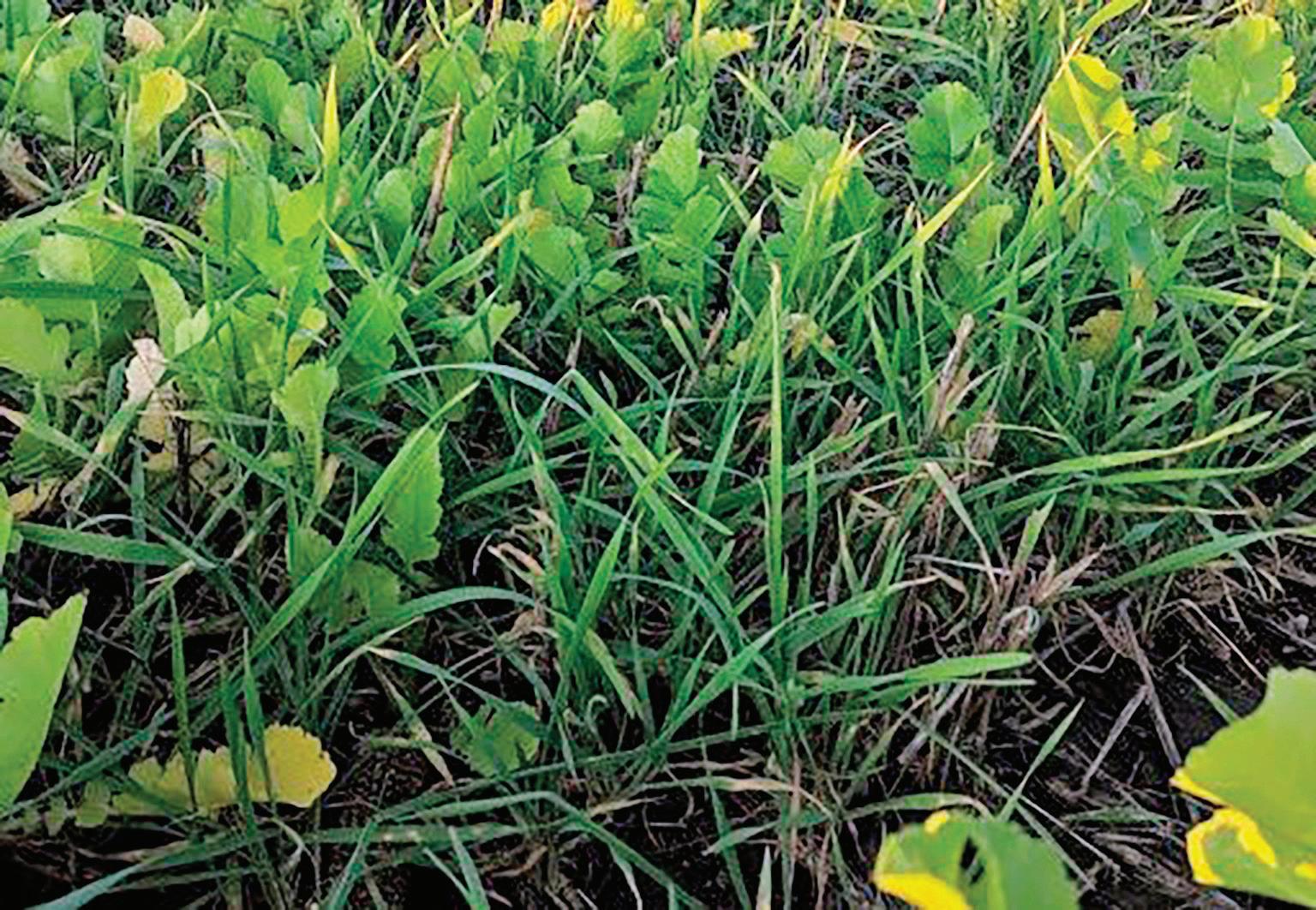
are also getting benefits from weed control in some situations,” said Kok. “Cover crops also help with drought and flood control as we face changes in the climate.”
At the end of the day, farmers are concerned about yield and profitability. “Cover crops can help increase yields,” said Kok. “They can also help increase profit. There has been some bad press when farmers have not understood how to best manage their cover crops, or selected the wrong cover crops to use on their farms. They have lost yield and money, but if managed properly, both yields and profits can increase.”
An example of selecting the wrong cover crop is to plant cereal rye in front of corn. “Cereal rye uses a lot of water, and uses a lot of nitrogen, so as a result, the following corn would be planted in a nitrogen-deficient environment,” said Kok. “Farmers need to pay attention to what they plant, where they plant it, and when they plant it, for it to be successful.”
An example of selecting the right crop is cereal rye in front of soybeans.
“Cereal rye provides excellent weed control when planted at the right rates,” said Kok. “Radishes are also good for weed control because they have some bio-fumigation effects.” Radishes should not normally be planted alone. A radishcereal rye grass mixture is a good option for controlling weeds.
Cover crops can be used to help manage nutrients. “Nutrient needs can be reduced if we use our cover crops well,” said Kok. “We have a lot of nutrients left over at the end of the growing season, especially after a corn crop. Cover crops can help capture a lot of these nutrients.”
Cereal rye and radishes will capture and hold nitrogen along with other nutrients left from the previous cash crop. These nutrients are then released and become available as they break down in the spring and summer months. “The weather does play a role in this nutrient management process,” said Kok. “Planting cereal rye early is important to be able to capture more nitrogen.”
Using a combination of cover crops, in a mix, works better than just one single cover crop species, in capturing nitrogen. Cereal rye with radishes, or radishes with oats can capture a lot of nitrogen. The radish and oats mix will winter-kill, and could risk erosion in the spring. “If you apply manure to a field, cover crops can be extremely helpful in sequestering the nutrients and holding them until the next season,” said Kok.
Can farmers actually grow nitrogen? “The literature is always full of articles about growing 200 pounds of nitrogen using cover crops,” said Kok. “That is really pushing it in Northern Indiana and Northern Ohio. Farmers need to be careful figuring out how much nitrogen they can grow, and how they do that. Some farmers use multiple species cover crop mixes to supply the nutrients needed. It takes a lot of management. These mixes need to contain some species that will freeze out, and others that can easily be controlled and terminated in the spring, with chemicals or by rolling,” said Kok. Often times it takes years of crop rotation with no-till and then growing cover crops to get a system and comfort level in place before trying to significantly reduce the nitrogen used on the following crop. u









The Ohio Soybean Council (OSC) received its 12th R&D 100 Award at the 58th annual R&D 100 Awards held on October 1. The R&D 100 Awards honor the 100 most innovative technologies of the past year. The award was given in the Software/Services category for the Handheld Sensor for Screening Crop Quality that was funded with Ohio soybean farmers’ checkoff dollars in cooperation with The Ohio State University.

This is the seventh R&D 100 Award OSC has received in the last seven years.
This mobile device allows individual farmers to analyze their own products and evaluate their quality — in the field, in seconds, and inexpensively. The technology uses near-infrared (NIR) spectroscopy to provide a profile of constituents. From the user’s perspective, the process is simple. The farmer collects the sample and places it in the sample holder. The NIR spectrometer collects data from the sample. The sensor processes the data and applies algorithms to quantify the components. Results are presented in an easy-to-read graphic or table format.
The sensor has tested a wide range of sample types — barley, corn, hemp, oats, potatoes, soybeans, meat, fish, pea protein, and milk protein — and provides unprecedented accuracy for each measured component.
“We are incredibly proud that the technology being developed with our Ohio soybean checkoff dollars
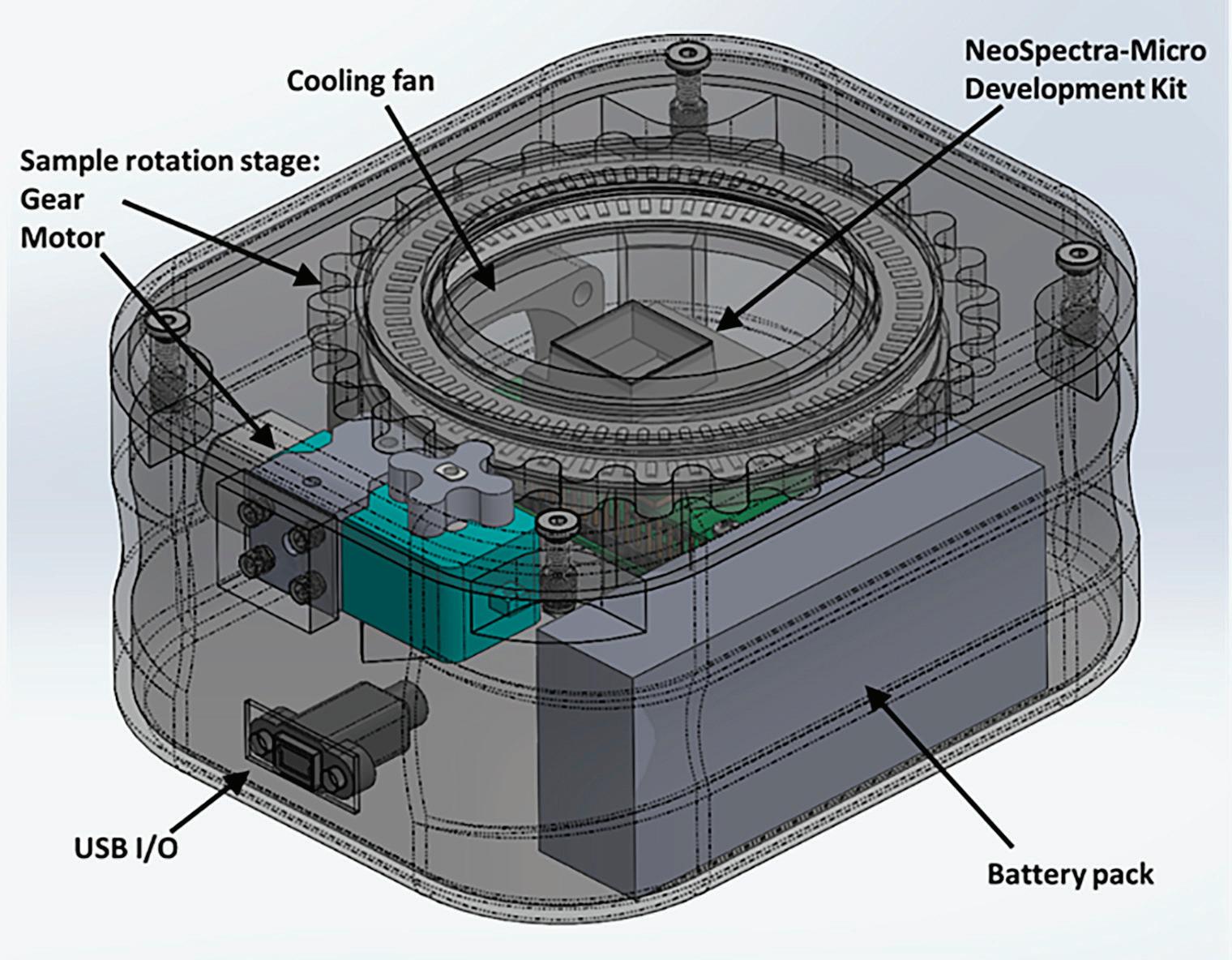
is being recognized alongside work from institutions like MIT and the U.S. Department of Homeland Security,” said Todd Hesterman, OSC Research Committee chair and soybean farmer from Henry County. “Not only is this device one of the most technologically significant products from the last year, it also has a direct benefit to farmers in the field.”
The entire system, at roughly 3" x 6", is readily portable. It is easy to use and can be operated with an app on a smartphone or tablet. The device is also cost-efficient; farmers can make a reasonable one-time purchase (as opposed to paying costly and recurrent lab fees), and the sensor consumes very little power.
“We are both proud and honored that the R&D 100 Award Committee has recognized this technology
and its advantages,” said Barry McGraw, OSC’s Director of Product Development & Commercialization. “This invention meets a long-standing need. It allows farmers to evaluate their own products’ quality — and do it on the spot. Now farmers can make informed and timely decisions to improve the quality of the harvest.
“And the benefits go beyond the farm,” McGraw added. “The sensor can be used at the point of sale so buyers know exactly what is on offer. Thanks to this tool, we could move toward a market system that rewards farmers who cultivate better produce.” u
For more information about this handheld sensor, OSC’s role in its development, or licensing, please contact Barry McGraw at bmcgraw@soyohio.org


What new technologies are your fellow farmers planning to invest in over the next five years?
That was one question the Association of Equipment Manufacturers sought to answer through a survey on the current adoption rates of agricultural technology, delivered with the assistance of Farm Journal Media. Responses were collected at the beginning of 2020 from the top 12 Midwestern row crop states with farmers that farmed 2,000 acres or more.
“For us, it was important to know the technologies that farmers plan to adopt so that our member companies can better serve their customers,” Anita Sennett, Senior Director for Agriculture at the Association of Equipment Manufacturers said.
Sennett says many of the technologies manufacturers have developed are now standard on equipment. And just like with computers or cell phones, farmers only use some of those technologies available to them, with many of them never being used.
“By learning what technologies farmers actually use today and plan to use in the future, our member companies can better tailor their technologies and equipment to meet their customers’ needs. Perhaps more importantly, the data also provided insights on why technologies aren’t being adopted. This gives our member companies an opportunity to address some of those areas,” Sennett said.
The top eight technologies participants planned to adopt in the next five years, based on survey feedback, included:
1. Remote grain sensing
2. Automatic equipment diagnosis
3. Remote-operated grain dryer
4. Artificial intelligence spot spraying
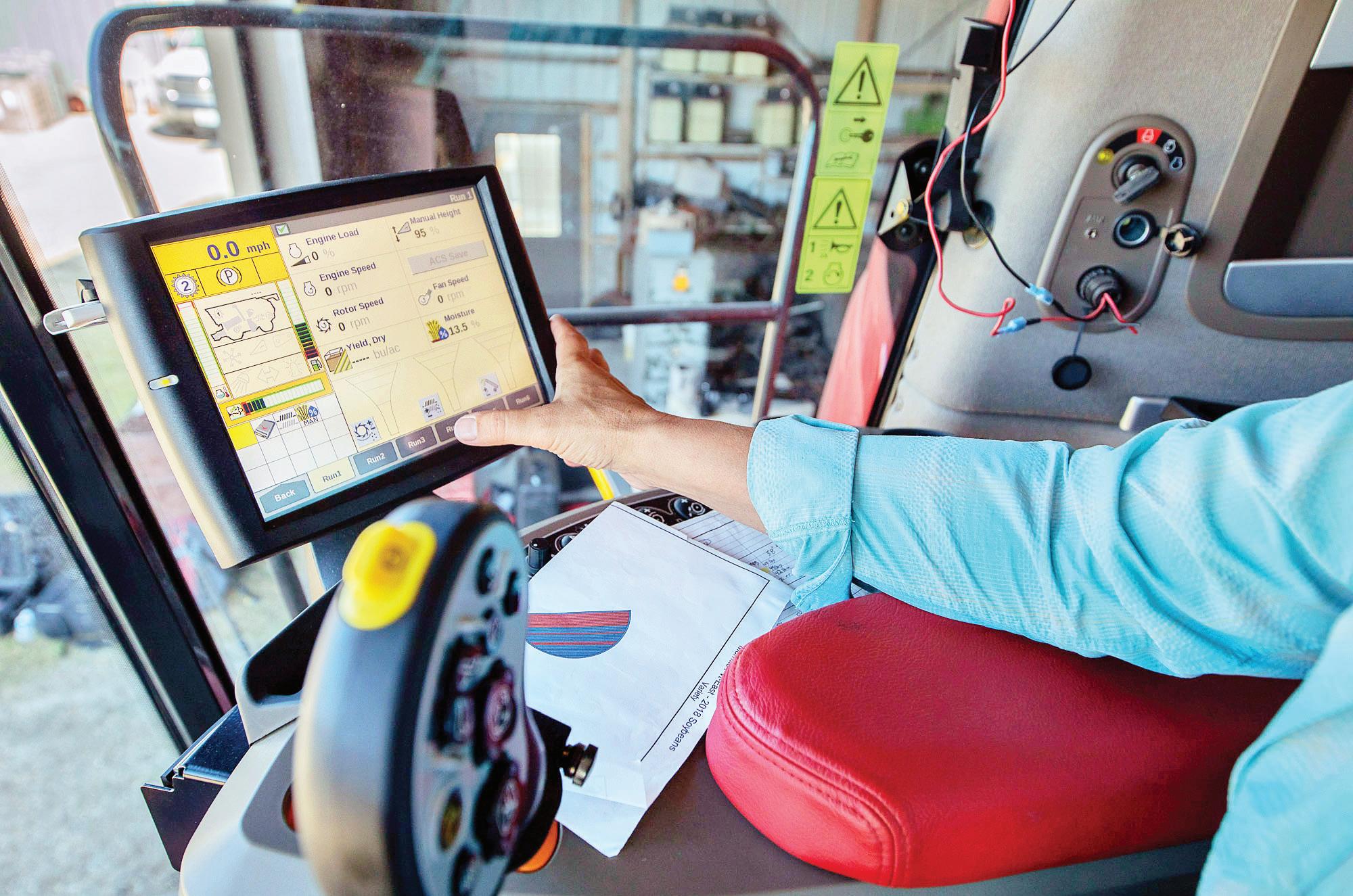
5. Automatic equipment performance reports
6. Remote weather sensing
7. Vehicle/equipment tracking
8. Remote file transfer
“While precision ag technologies top the list, there is an increased appreciation for the benefits of machine data — advanced automatic warning of maintenance issues to save on down time, tracking equipment use and performance in order to find efficiencies and optimize productivity,” Sennett said. “Note that, overall, farmers view the cost of new technologies as a limiting factor, and that is understandable if the yield-boosting and cost-saving benefits aren’t clear.”
Respondents rated their top five reasons for adopting new technologies as:
1. Improves productivity
2. Improves efficiency
3. Reduces cost
4. Saves time
5. Increases revenue
However, producers are limited by the expense of some technology and their lack of comfort with the products, along with lack of support in their area.
“I think that one very telling takeaway was that, when asked what needs technology could solve, the majority of farmers responded, ‘I don’t know.’ That speaks to a huge opportunity for our member companies to make farmers more aware of the benefits of the technologies available to them — from increasing yield to saving on inputs and labor,” Sennett said. “The data also revealed a need for companies to better educate farmers on how to use those technologies, and to offer local support. Identifying these opportunities to increase adoption is definitely a key takeaway.” u
This story originally appeared on PrecisionAgReviews.com. Precision Ag Reviews is a checkoff-funded website that compiles farmer-written reviews of precision ag equipment and technology to help you make the best buying decisions for your farm.








Soybeans are consistently threatened by pests and pathogens that can cause serious yield losses. A collaborative team of Ohio Agricultural Research and Development Center (OARDC) scientists are helping combat diseases by searching for resistant varieties and pinpointing their genes. And they are using a unique virus-induced gene silencing (VIGS) approach to do it.
“To ensure soybean plants perform optimally in the field, we must understand the roles of each of the soybean’s genes and then try to combine the high-performance genes in one or a few varieties. Gene silencing is a tool we can use to use to figure gene functions,” says Feng Qu, Ohio State University plant pathologist and principal investigator for the research funded by the Ohio Soybean Council. “This research effort is expected to benefit Ohio and other soybean farmers by developing superior seed stocks with enhanced disease resistance traits.”
So, what exactly is VIGS? Qu uses a car analogy to describe it. “When you open the hood of a car, you see lots of nuts, screws and wires. If you wonder what a specific wire is for, you can
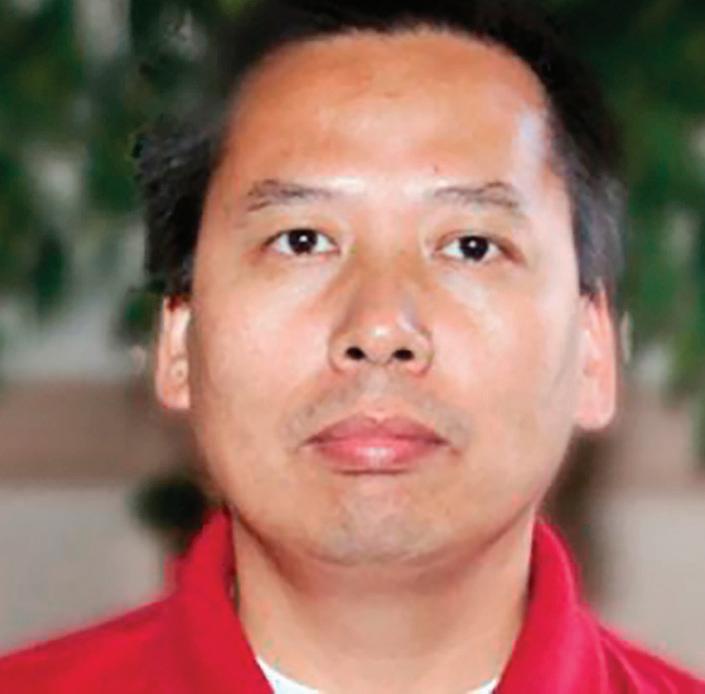

disconnect or loosen it and then try to start the car to find out what goes wrong,” he says. “Disconnecting or loosening the connection silences the function of that particular wire.”
Similarly, soybeans have tens of thousands of genes acting as wires and screws to ensure the seed grows into a healthy plant that can overcome diseases and adverse environments.
“For most of these genes, we still do not know what their specific functions are,” he says. “Different varieties can have unique genes just like different car models have specific features.”
Qu says other tools exist that can silence genes. However, those tools require scientists to produce transgenic soybeans, a slow process in comparison to the VIGS approach. With VIGS, soybeans can fight viruses by mobilizing a defense mechanism to silence invading virus genes.
“VIGS can modify a virus to make it carry a portion of a soybean gene. The soybean defense mechanism then attempts to silence genes of the modified virus, along with the part of the soybean gene carried in
the modified virus. This causes the corresponding soybean gene to be silenced,” Qu says. “This is fairly quick and can interrogate multiple genes at a time.”
However, it is not without challenges, Qu adds. VIGS often just loosens but does not completely disconnect a soybean gene which can make it difficult for scientists to interpret results.
“We are still trying to figure out how to scale up VIGS experiments so that more genes can be studied simultaneously. More VIGS vectors need to be developed, because currently available vectors are often specific to certain varieties,” says Qu. “Finally, VIGS procedures need to be further calibrated for use with soybean genes whose effects are quantitative.”
Scientists at Iowa State University have already successfully used VIGS to identify resistant genes that counteract soybean rust. VIGS has also been used to characterize a resistance gene to fight soybean cyst nematode. Field adoption of both genes is expected in the future. u
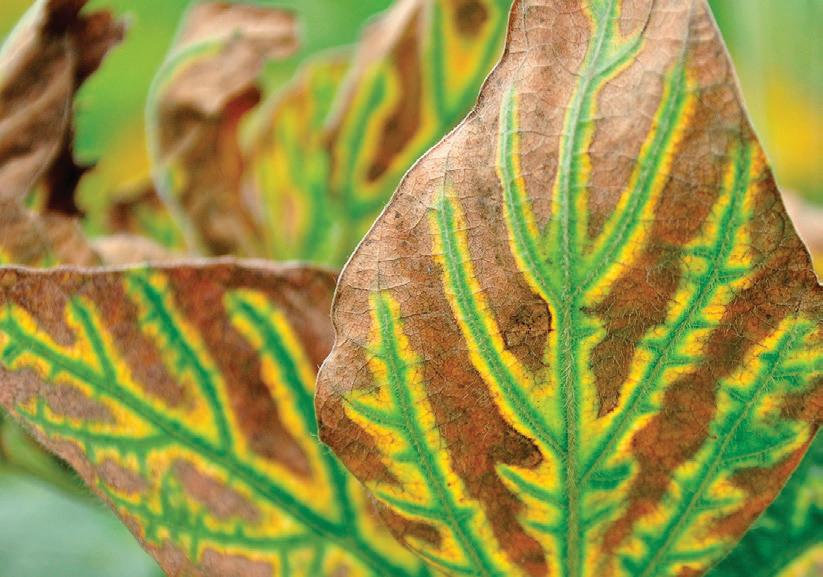
Sudden death syndrome, stink bugs, soybean cyst nematodes and many other yield-robbing pests and diseases. It’s a rough world out there, costing soybean farmers billions of dollars every year. Fortunately, your state soybean checkoff is on the job with research projects to develop effective traits and practices to get back as much of your yield as possible.

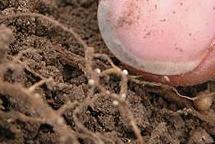
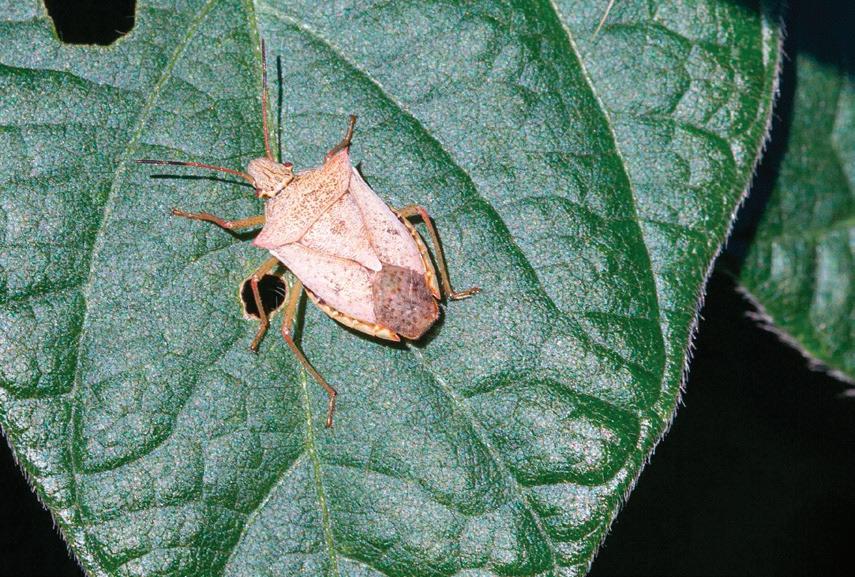
The Soybean Research & Information Network provides you with information to work smarter and more efficiently. Visit soybeanresearchinfo.com and check out the hard work behind your hard work.











“THE CHECKOFF HAS BEEN A HELP TO US. IT'S OPENED FOREIGN MARKETS AND FUNDED RESEARCH ON DISEASES AND FUNGI. THE RESEARCH AND DEVELOPMENT HAS JUST BEEN VERY POSITIVE.”
-JAN LAYMAN, KENTON, OHIO












BY INVESTING IN THE SOYBEAN CHECKOFF, FARMERS ENSURE END-USER DEMANDS ARE MET WHILE RAISING SOYBEANS PROFITABLY. USING INFORMATION FROM THE OHIO SOYBEAN COUNCIL, FARMERS TRACK RESEARCH ON NEW VARIETIES, NEW USES AND NEW FOREIGN MARKETS TO GROW NEW OPPORTUNITIES.
LEARN MORE AT SOYOHIO.ORG/HEREWEGROW.
BROUGHT TO YOU BY OHIO SOYBEAN FARMERS AND THEIR CHECKOFF.